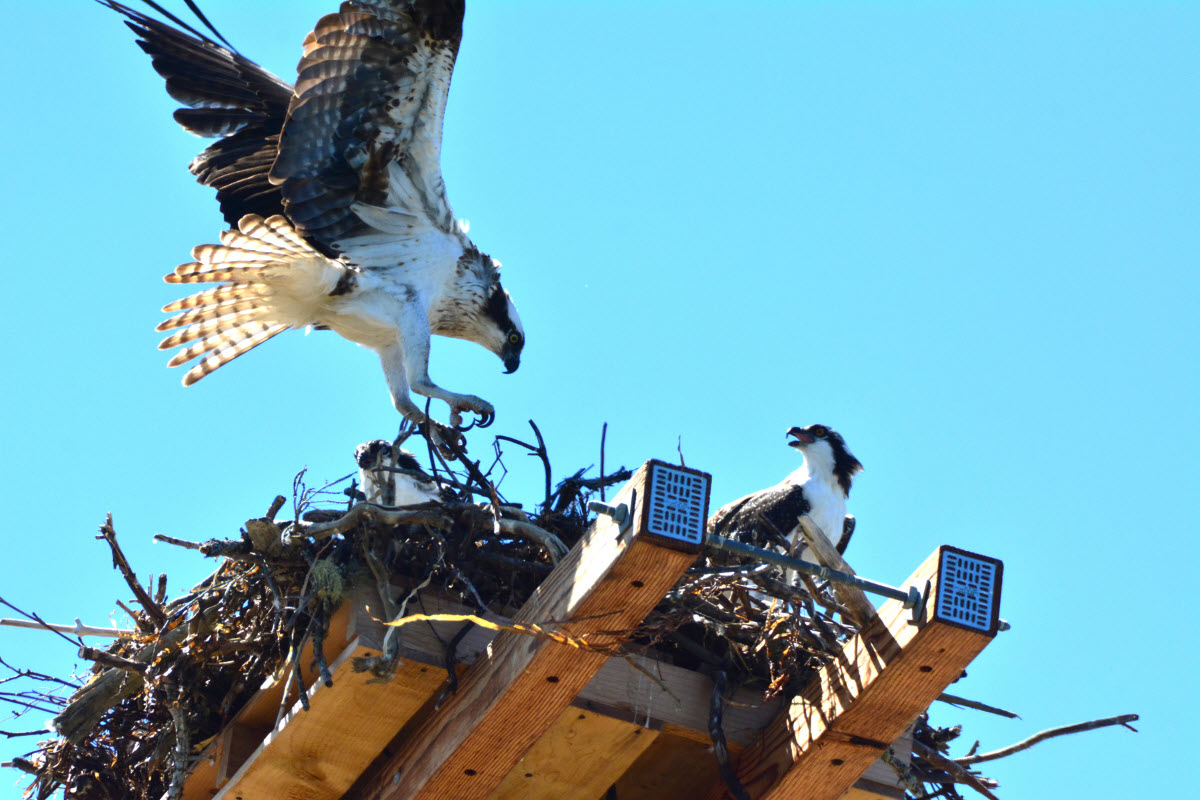From electric poles to distribution lines and renewable energy projects, various species of birds are likely to encounter above-ground equipment. Most of these birds are protected by the Migratory Bird Treaty Act, the Bald & Golden Eagle Protection Act and the Endangered Species Act.
As a company, we’re constantly looking for ways we can create a better future, and operating our utilities in a manner that protects birds is one of many examples. That’s why we developed an original Avian Protection Plan in 2017 and revised it again in 2021.
By making our intentions known internally as well as with environmental stakeholders, such as U.S. Fish and Wildlife Service and the Wisconsin Department of Natural Resources, we can work together in good faith to do the right thing.
Our Avian Protection Plan includes:
- A risk management tool that shows migratory bird patterns, along with water crossings, as areas of high risk. In these scenarios, we can install an alternative nesting platform (when habitat allows) to encourage birds to move away from high-risk areas. Last fall, for example, we partnered with Friends of Lake Kegonsa to install two osprey platforms in Wisconsin.
- A strategy to place distribution lines underground where feasible, in areas deemed high avian collision risks. We’ve placed approximately 25% of our distribution lines underground as of 2021.
- A plan to upgrade existing facilities to better protect birds. This includes increasing the distance between pieces of equipment with differing voltage, insulating hardware and increasing the visibility of conductors to prevent collisions.
- Routine training for employees who work near high-risk lines. The annual training on our Avian Protection Plan ensures our employees know the steps they need to take to protect birds.
In association with the American Clean Power Association, we also participate in a voluntary program in which we “feather” our wind turbines. This means spinning the blades parallel with the wind while keeping the blades rotating at less than 50 mph to help prevent collisions.
We track and report any avian injuries or mortalities at wind projects and educate nearby landowners and operators about the importance of timely and proper disposal of animal carcasses.
At solar projects, which often have longer grass growth, we expect some ground-nesting birds to make themselves at home within the solar arrays. Prior to cutting any grass, we will have a qualified biologist walk the site to look for nesting birds in our native grasses or pollinator habitats.
These are just a few of the steps we take each and every day to keep all species of birds safe from our infrastructure. More details about our environmental efforts are included in our Corporate Responsibility Report.


